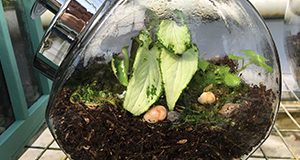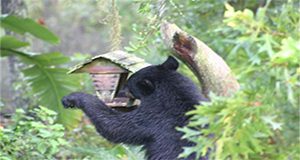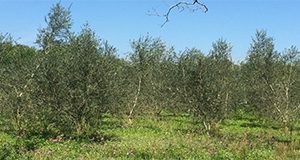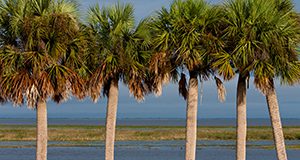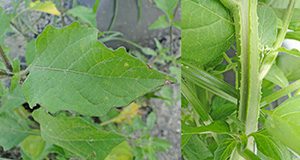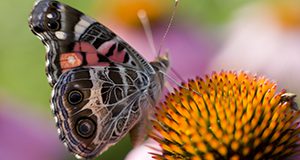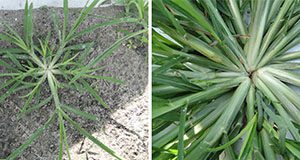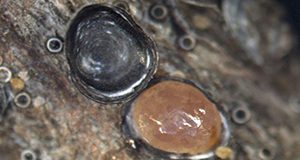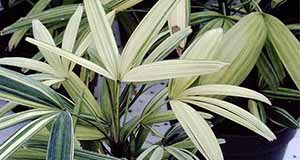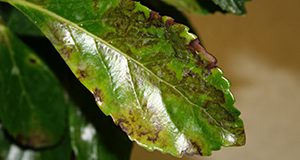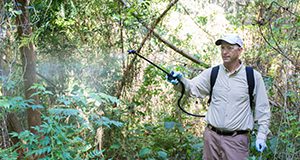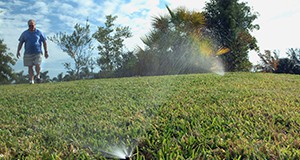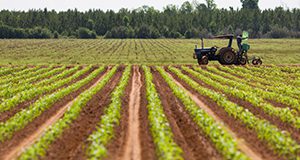
Nutrient applications are often required to meet Florida’s demand for agricultural and horticultural commodities, but often those applications occur in close proximity to water bodies. In order for scientists, policy makers, and citizens to make decisions regarding nutrient issues in Florida, it is important to first understand which markets contribute to Florida’s fertilizer consumption. This three-page fact sheet explains Florida’s fertilizer usage statistics. Written by T.W.Shaddox and published by the Environmental Horticulture Department.
http://edis.ifas.ufl.edu/ep541
Category: Lawn & Garden
Plants and Youth: Designing and Building a Terrarium
A terrarium is a collection of small plants growing in a clear, usually enclosed, container. This three-page fact sheet walks you through the process of creating your own terrarium. Written by Amy Vu and Sydney Park Brown, and published by the Environmental Horticulture Department.
http://edis.ifas.ufl.edu/mg356
Securing Bird Feeders from Florida Black Bears
The Florida black bear (Ursus americanus floridanus) is the only species of bear in Florida, with an estimated population of approximately 4,030 bears. Bears are excellent climbers and can access bird feeders that are suspended from trees. This 3-page fact sheet written by Ethan T. Noel and Elizabeth F. Pienaar and published by the Wildlife Ecology and Conservation Department explains how to secure bird seed from bears so that they don’t become reliant on human food sources, a condition that puts them at greater risk of being killed from vehicle collisions, illegal shooting, or euthanasia.
http://edis.ifas.ufl.edu/uw430
Developing County Associations for School and Community Gardens
Increasingly, gardeners receive attention for the educational, environmental, health, and social impacts that their projects facilitate within schools and communities. Garden associations allow Extension to play a vital role in providing technical information to support new and existing gardens. This three-page fact sheet outlines the framework used by a pilot garden association program in Polk County, Florida. Written by John M. Diaz, Susan Tyler Webb, and Erin Elsberry and published by the Department of Agriculture Education and Communication.
http://edis.ifas.ufl.edu/wc279
Xylella fastidiosa and Olive Quick Decline: Symptoms and Identification of an Insect Vectored Pathogen
A plant disease called Olive Quick Decline is killing olive trees throughout southern Italy. Although the pathogen that causes the disease is not known in Florida, it may spread to the state, which means that olive producers and homeowners with olives must watch for symptoms of the disease as well as for the leafhopper insects that spread it. This 3-page fact sheet written by Whitney Elmore and Jennifer L. Gillett-Kaufman and published by the Department of Entomology and Nematology explains how to monitor for the disease and its insect vectors and offers advice and assistance for commercial and hobby olive growers.
http://edis.ifas.ufl.edu/in1165
Fertilization of Field-Grown and Landscape Palms in Florida
Palms growing in Florida landscape or field nurseries are subject to a number of potentially serious nutrient deficiencies. This five-page document discusses the prevention and treatment of these deficiencies. Written by Timothy K. Broschat and published by the Environmental Horticulture Department.
http://edis.ifas.ufl.edu/ep261
Agricultural Soils of Florida
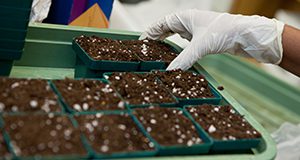
This seven-page fact sheet describes the various soil Orders in Florida, how they were developed, their characteristics, coverage in the state, and uses. This information is important for educating land owners, decision-makers, and educators about soils in Florida, leading to better soil management for agricultural and environmental sustainability. Written by Rao Mylavarapu, Willie Harris, and George Hochmuth and published by the Soil and Water Sciences Department.
http://edis.ifas.ufl.edu/ss655
Biology and Management of American Black Nightshade (Solanum americanum P. Mill.) in Tomato, Pepper, Cucurbit, and Strawberry
This three-page fact sheet describes the biology and management of American black nightshade, explaining how to control for it in tomato and pepper, cucurbits, and strawberry. Written by Nathan S. Boyd, Shawn Steed, Chris Marble, and Andrew MacRae and published by the Horticultural Sciences Department.
http://edis.ifas.ufl.edu/hs1176
Are Consumers Interested in Ornamental Plants That Benefit Pollinator Insects?
Population declines among bees, butterflies, and other pollinator insects are very worrying because 70% of the world’s food crop production depends upon these tiny insect workers. Fortunately, ninety million US households have yards, landscapes, or gardens that can enhance pollinator habitat and health. Consumers’ actions can drastically impact pollinator insects and even help them to recover. This 5-page fact sheet written by Hayk Khachatryan and Alicia Rihn and published by the UF Department of Food and Resource Economics, October 2016, describes a new UF/IFAS study of consumers’ actions and perceptions as they considered ornamental plants that benefit pollinators. It covers consumers’ current actions to aid pollinators, their interest in purchasing plants to help pollinators, and their perceptions about plant availability, and it describes strategies for merchants and producers to cater to consumer preferences for in-store communications/promotions and help them to find and purchase plants that aid pollinator insects.
http://edis.ifas.ufl.edu/fe997
Luffa: an Asian Vegetable Emerging in Florida
Luffa is the genus name of several tropical and subtropical plants in the cucumber family. Alternatively spelled “Loofa” or “Loofah,” the name is derived from the plant’s use as a material for sponges and dish cloths for bathing and cleaning dishes. This six page fact sheet describes the two types of Luffa, how to cultivate them, and what they can be used for. Written by Yucong Xie, Guodong Liu, Yuncong Li, and Kati Migliaccio and published by the Horticultural Sciences Department.
http://edis.ifas.ufl.edu/hs1285
Biology and Management of Goosegrass (Eleusine indica (L.) Gaertn.) in Tomatoes, Peppers, Cucurbits, and Strawberries
This four-page fact sheet gives a brief description of the biology and management of goosegrass, a common annual turf and horticultural weed found throughout Florida that grows well in compact, wet soils and superficially resembles crabgrasses. Written by Nathan S. Boyd, Kiran Fnu, Chris Marble, Shawn Steed, and Andrew W. MacRae and published by the Horticultural Sciences Department.
http://edis.ifas.ufl.edu/hs1178
Pest Identification Guides, August 2016
Created to help growers and crop consultants, private homeowners, Master Gardeners, and the general public identify common arthropod pests and the damage they inflict, each field guide provides photos of the important life stages and crop damage associated with arthropod pests. The text highlights key general morphology and biology, distribution, and natural enemies. Written by Jeffrey Cluever and Hugh Smith, and published by the UF Department of Entomology and Nematology.
The following have been added to the existing series, http://edis.ifas.ufl.edu/topic_series_pest_identification_guides
Managing Scale Insects on Ornamental Plants
Scale insects are a diverse group of piercing-sucking pests (Hemiptera) commonly found on ornamental plants in landscapes and nurseries. There are over 180 species of scale insects in Florida, but only a small percentage are important pests of ornamental plants. They damage plants and secrete a waxy covering that makes them difficult to control using most chemical control measures. This 7-page fact sheet written by Eileen A. Buss and Adam Dale and published by the Department of Entomology and Nematology differentiates between armored and soft-scale insect pests and lists common types of each, provides information about the biology of scale insects and how to identify them and the damage they cause, describes how to scout and monitor for scale insects, and lists several methods for prevention and control of scale insect invasions.
http://edis.ifas.ufl.edu/mg005
Rhapis excelsa: Lady Palm
Rhapsis excelsa, the lady palm, is an outstanding, small clustering palm for shady landscape or interiorscape use. This two page fact sheet gives a brief overview of the Lady Palm. Written by Timothy K. Broschat and published by the Environmental Horticulture Department.
http://edis.ifas.ufl.edu/fp501
Viburnum Downy Mildew
Downy mildew on viburnum is currently a serious concern throughout Florida. Winters in south Florida combine high humidity with cool nights, creating ideal conditions for disease development. Downy mildews are caused by several different species that tend to be host specific. Plasmopara vibruni is the pathogen that affects viburnum. This five-page fact sheet describes the hosts, symptoms, and management practices for Viburnum Downy Mildew.
Written by A. J. Palmateer and published by the Plant Pathology Department.
http://edis.ifas.ufl.edu/pp329
How to Use a Dichotomous Key: A Tutorial Featuring 10 Common Shade Trees of the Tampa Bay Area
A dichotomous key is a tool used to help identify an unknown organism. This twelve-page fact sheet features a key of leaf characteristics for ten common broadleaf trees in the Tampa Bay Area. Accurately navigating this series of paired, either-or choices about leaf characteristics will lead the reader to identify the correct tree from the group of ten. Written by Andrew K. Koeser, Gitta Hasing, Michael G. Andreu, and Melissa H. Friedman and published by the Environmental Horticulture Department.
http://edis.ifas.ufl.edu/ep510
10 Common Palms of the Tampa Bay Area
Palms often serve as key specimens in urban landscape designs. Despite this, their identity is often unknown to Florida’s new, seasonal, and even long-term residents. This ten-page fact sheet serves as a quick reference for some of the most common palms found in North and Central Florida and the Tampa Bay Area in particular. Written by Gitta Hasing, Andrew K. Koeser, Melissa H. Friedman, and Timothy K. Broschat and published by the Environmental Horticulture Department.
http://edis.ifas.ufl.edu/ep506
Identification, Biology, and Control of Small-Leaf Spiderwort (Tradescantia fluminensis): An Invasive Weed of Virtually Worldwide Distribution
Tradescantia fluminensis (small-leaf spiderwort) is a perennial subsucculent herb native to tropical and subtropical regions of Brazil and Argentina. The species has been introduced to the United States and countries in many parts of the world where it is often considered invasive. This seven-page fact sheet describes the small-leaf spiderwort, its taxonomy, geographical distribution, biology and ecology, reproduction and colonization, its impact as a weed in the southeastern United States, and ways of managing the spread of small-leaf spiderwort. Written by Jason C. Setiz and Mark W. Clark and published by the Department of Soil and Water Science.
http://edis.ifas.ufl.edu/ss652
Herbicides to Kill Invasive Trees in Home Landscapes and Surrounding Natural Areas
Several plant species that are invasive in natural areas of public lands also occur on private property. Invasive plants on private property that thrive within both landscaped and surrounding natural areas can serve as a source of infestation to other natural areas. Therefore, property owners are encouraged to remove invasive plant species from both areas. This 5-page fact sheet is a major revision that discusses different herbicides, hand-pulling, stump grinding, foliar herbicide application, cut stump herbicide application, basal bark herbicide application, hack-and-squirt, frill, or girdle herbicide application, licenses and training, and control of specific invasive plants. Written by K. A. Langeland and S. F. Enloe, and published by the UF Department of Agronomy, revised May 2016.
http://edis.ifas.ufl.edu/ag259
Engaging High Water Users in Water Conservation #2: High Water Users' Water-related Behaviors and Willingness to Act
Approximately 50% of Floridians’ daily water consumption is used for outdoor purposes, such as landscape irrigation; this is 20% higher than the national average. In order to alleviate the pressure on the precious water resources in Florida from various demands, increased public awareness and engagement in water conservation is needed especially among high water users. This four-page fact sheet is the second in a series discussing how Extension can improve high water users’ engagement in water conservation with a focus on high water users’ water-related behavior and willingness to act. Written by Pei-wen Huang and Alexa J. Lamm and published by the Department of Agricultural Education and Communication.
http://edis.ifas.ufl.edu/wc256
